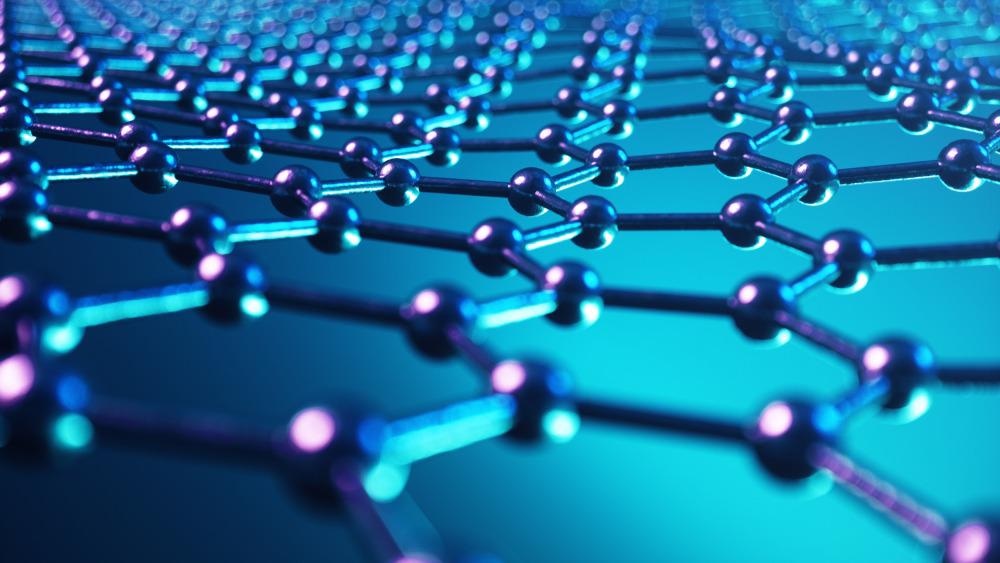Recently, researchers in the Journal of Energy Chemistry have presented their design for a functional separator which includes an ultra-thin layer of gold (Au) nanoparticles coating on a commercial polyolefin separator to control the lithium dendrite growth and stabilize the graphite anode.

Study: Regulating the growth of lithium dendrite by coating an ultra-thin layer of gold on separator for improving the fast-charging ability of graphite anode, Image Credit: Rost9/Shutterstock.com
One of the major challenges in lithium-ion (li-ion) battery technology is the growth of lithium dendrites, which destroys the thermal stability and can compromise the structural integrity of the battery which may cause catastrophic failure such as short-circuiting and even fires. This is of particular concern due to the ever-growing application of li-ion batteries in electric vehicles (EVs) and portable electronic devices.
The researchers hope that their separator design will improve the safety of li-ion batteries while also enhancing electrochemical performance and enabling better cycling stability under fast-charge conditions.
Dendrite Growth
While Li-ion batteries are the most popular type of battery in portable electronic batteries and also in the EV market, safety issues have been reported and raised public concerns about the technology.
Among the reported incidents, lithium dendrite formation is one of the leading reasons for battery failure. Lithium dendrites are metallic microstructures – similar to stalactites and stalagmites found in caves – that form on the negative electrode when lithium ions accumulate on the anode surface and cannot be efficiently absorbed.
Thus, understanding the growth mechanism of lithium dendrite formation and how to prevent the occurrence of this phenomenon is key to improving overall battery safety and efficiency. One of the potential causes of lithium dendrite formation is fast-charging cycles as this can cause a pile-up of li-ions on the graphite anode which over time forms dendrites.
The US Advanced Battery Consortium (USABC) states that it only takes 15 min to charge to 80% state of charge (SOC) for advanced high-performance batteries. Graphite is one of the most commonly used anode materials due to its high specific capacity of 372 m Ah g−1 , low cost, and exceptional cycling reversibility.
However, there are a number of urgent issues that need to be resolved urgently in relation to graphite performance, including severe capacity decay under fast charging and poor electrochemical performance at low-temperature operation.
Au Nanoparticle Loaded Separator
In the past few years, significant efforts, such as the development of novel electrolytes to regulate lithium-ion solvation, building artificial SEI, separator modification and graphite anode modification, have been focused on eliminating the formation of lithium dendrite during fast charging cycles and general li-ion battery application.
The researchers at Tsinghua University deposited Au nanoparticles onto a commercial separator using a thermal evaporation coating system. The objective was to stabilize the graphite anode and thus control the lithium dendrite growth mechanism.
the highly conductive Au layer with remarkable lipophilicity could ‘seed’ the growth of Li dendrite predominantly on separator facing the graphite anode, therefore changing the growth direction of dangerous dendrites.
Professor Kai Lui, corresponding author of the study and tenured professor at Tsinghua University’s Department of Chemistry
The team then subjected the modified battery to fast-charging cycles at varying capacities in order to monitor the formation and growth of lithium dendrites: “the modified separator can change and regulate the dendrite growth direction to improve the safety and electrochemical performance of battery,” says Lui.
Therefore, the Au nanoparticle-loaded separator offers an effective strategy that could usher in a class of high-safety li-ion batteries without compromising energy density. The researchers applied in-situ optical microscopy to illustrate the dynamic process of lithium dendrite growth and evolution.
Improving Battery Safety
Maintaining a stable battery operation helps to ensure safety, sustain battery health, and prolong functionality. Fast charging can potentially kick the graphite ion absorption out of sync and cause a pile-up of lithium ions.
Therefore, any advances made in relation to the internal mechanisms and cycle stability of li-ion batteries when subjected to fast-charging conditions will result in less pileup and improve battery safety in the long term.
“The Li/Graphite cells with Au nanoparticles coated separator could cycle stably with a high areal capacity retention of 90.5% over 95 cycles at the current density of 0.72 mA cm−2,” explained Liu. In simple terms, this enables the better stability of li-ion batteries under fast-charging conditions.
The innovative, yet simple separator presented in the Journal of Energy Chemistry, not only significantly improves the safety of Li-ion batteries during fast-charging conditions but also ensures boosts electrochemical performance.
References:
S. Yan, X. Chen, P. Zhou, P. Wang, H. Zhou, W. Zhang, Y. Xia, K. Liu, Regulating the growth of lithium dendrite by coating an ultra-thin layer of gold on separator for improving the fast-charging ability of graphite anode, Journal of Energy Chemistry (2021), doi: https://www.sciencedirect.com/science/article/pii/S2095495621006008
Disclaimer: The views expressed here are those of the author expressed in their private capacity and do not necessarily represent the views of AZoM.com Limited T/A AZoNetwork the owner and operator of this website. This disclaimer forms part of the Terms and conditions of use of this website.